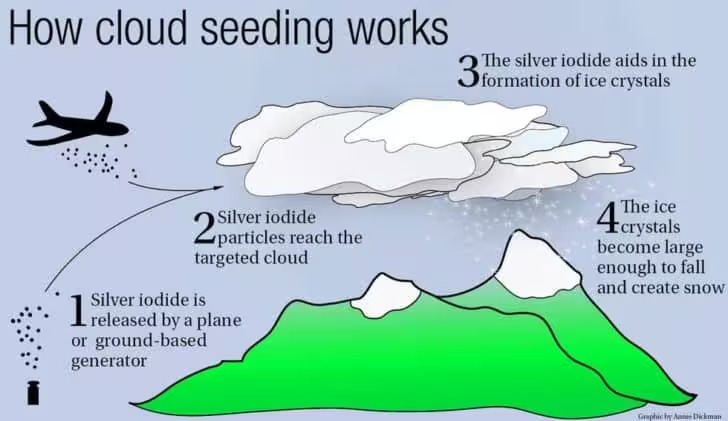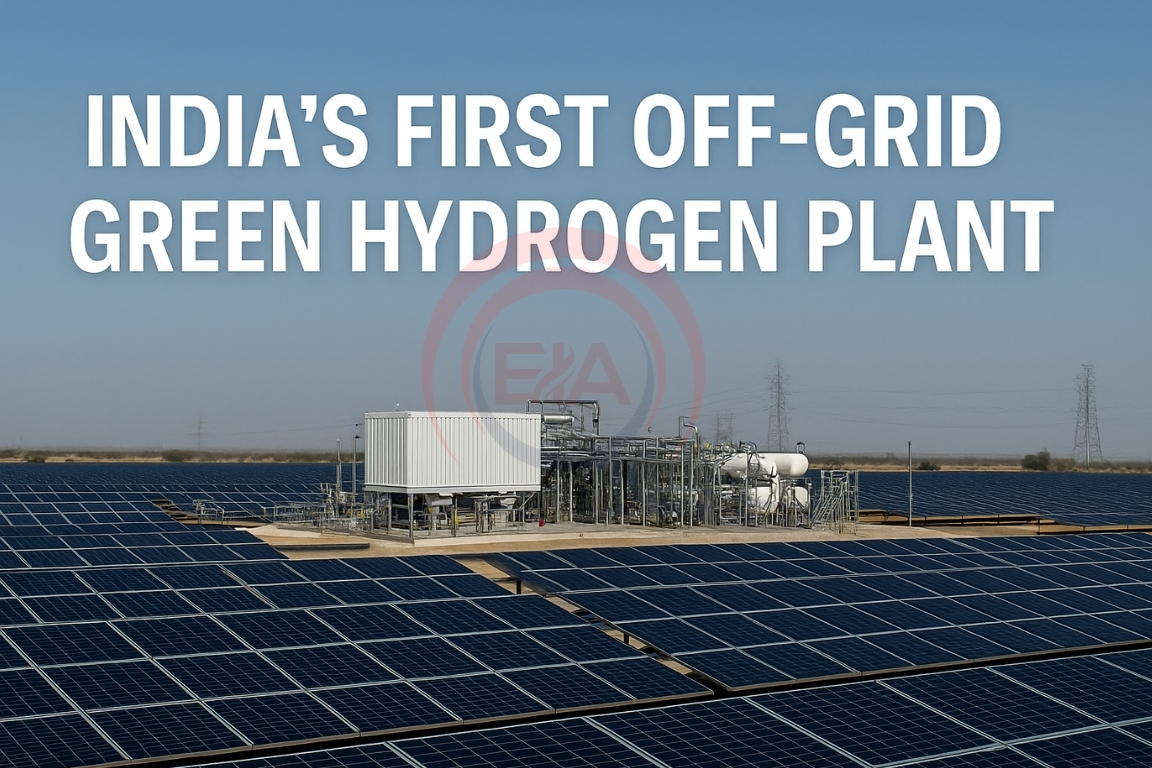Delhi, facing severe air pollution, carried out cloud-seeding experiments in partnership with IIT-Kanpur to create artificial rain. However, the trials resulted in only trace rainfall — 0.1 mm in Noida and 0.2 mm in Greater Noida — due to low humidity and weak cloud conditions.
What is Cloud Seeding?
- Cloud seeding is a weather modification technique used to increase rainfall by spreading tiny particles into suitable clouds.
- These particles act as condensation or ice nuclei, helping water droplets combine and fall as rain.
- The method was first developed in the 1940s and is now used in over 50 countries, including the U.S., China, and the UAE.

How the Process Works
- Substances like silver iodide, potassium iodide, or sodium chloride are released into clouds.
- These are dispersed using aircraft, rockets, drones, or ground generators.
- The process only works when clouds already contain enough moisture and depth for condensation.
- Ideal conditions include over 50% humidity, cool temperatures, and existing cloud formation.
Why Delhi’s Trials Produced Limited Rain
- The India Meteorological Department (IMD) reported that moisture levels were only 10–15%, too low for effective seeding.
- Though clouds were present, they lacked sufficient liquid water content.
- Cloud bases were around 10,000 feet, whereas effective seeding usually needs clouds below 5,000 feet.
- The trials, however, provided valuable technical experience for future attempts.
Environmental and Technical Concerns
- Silver iodide, used as a seeding agent, is slightly toxic in large amounts and can affect aquatic life.
- There is also uncertainty about how much rainfall is actually caused by seeding versus natural weather changes.
- The World Meteorological Organization (WMO) warns that measuring seeding’s effectiveness remains a scientific challenge.
Impact on Air Pollution
- Despite weak rainfall, air quality improved slightly after the experiment.
- PM2.5 levels dropped from around 230 to 205, and PM10 levels from 210 to 170 in several Delhi areas.
- This shows that even light precipitation can settle airborne particles and temporarily reduce smog.
Way Forward
- Cloud seeding can be a supportive measure, not a long-term solution.
- Experts stress the need for regional cooperation and emission control across states to address the root causes of pollution.
- Sustainable improvement requires curbing emissions from transport, construction, and power plants through an airshed-based strategy.
Conclusion:
Delhi’s cloud-seeding trials offered scientific insights but minimal rain. Artificial rain may provide short-term relief from pollution, yet lasting air quality improvement depends on systemic emission reduction and coordinated policy action.
This topic is available in detail on our main website.





